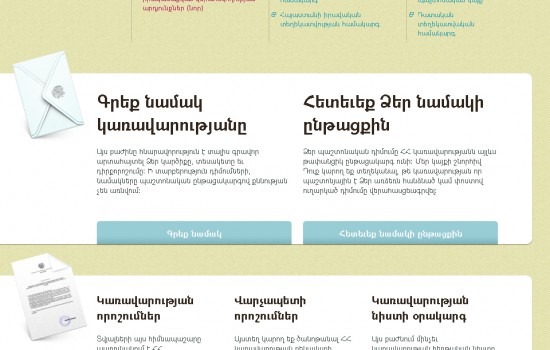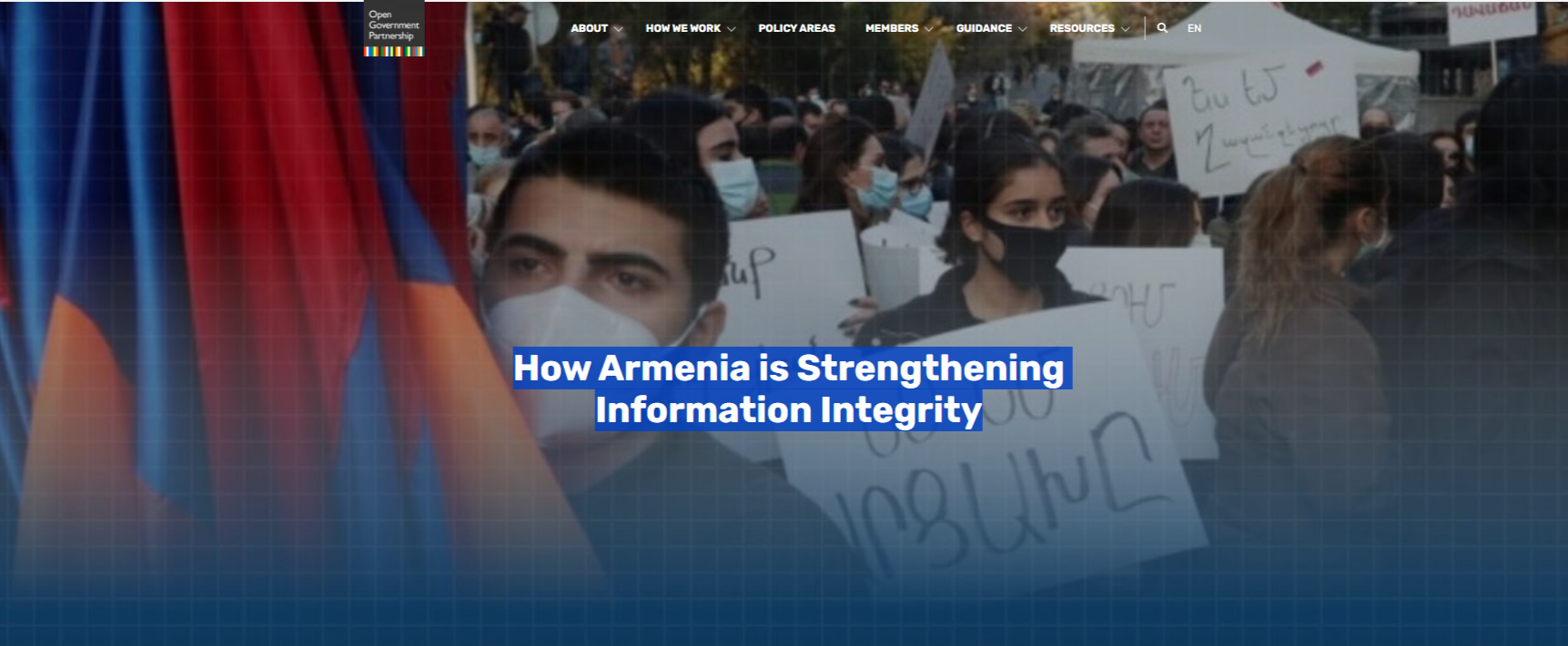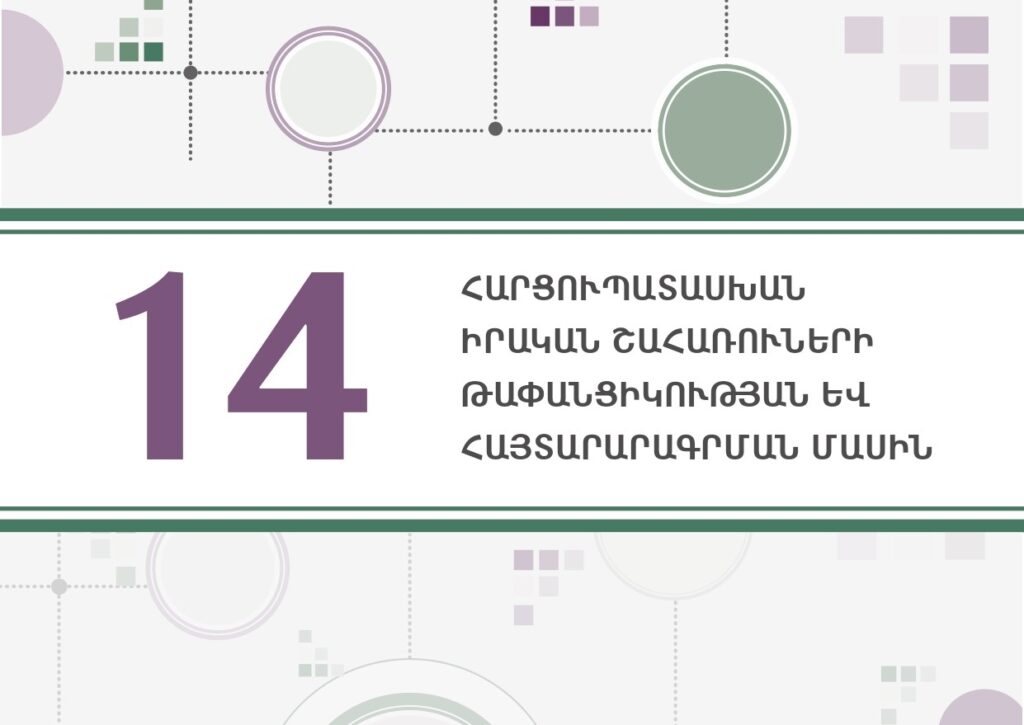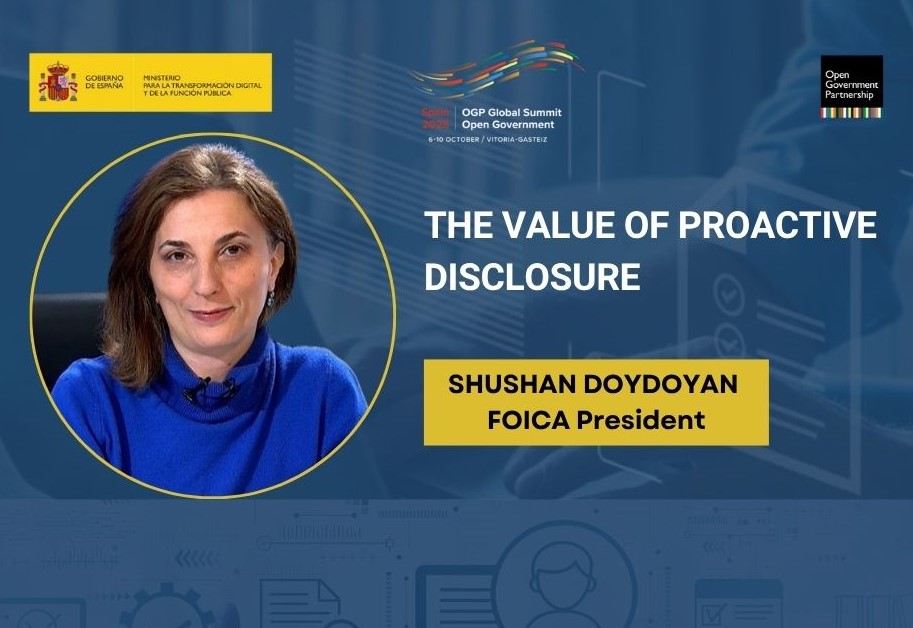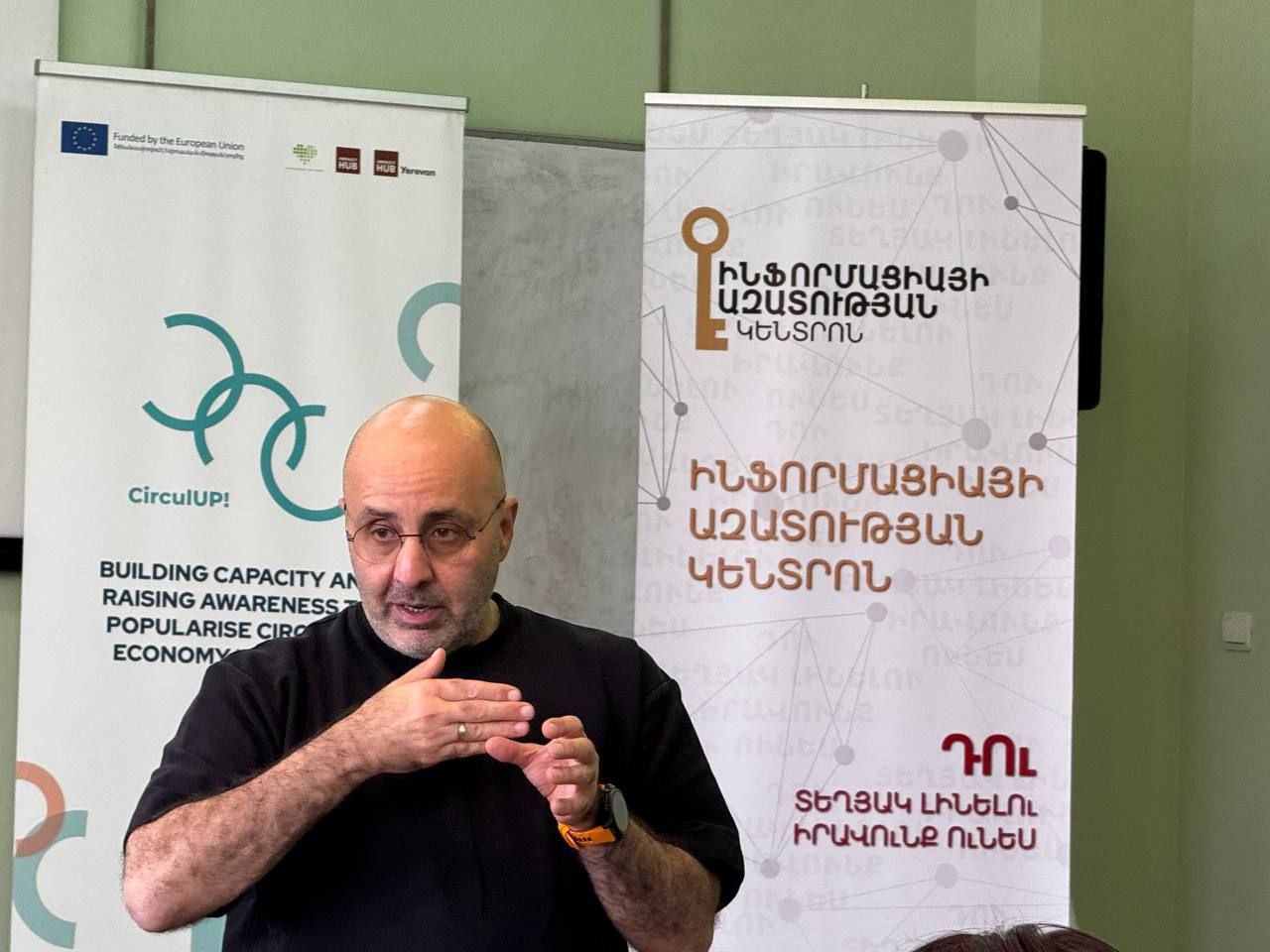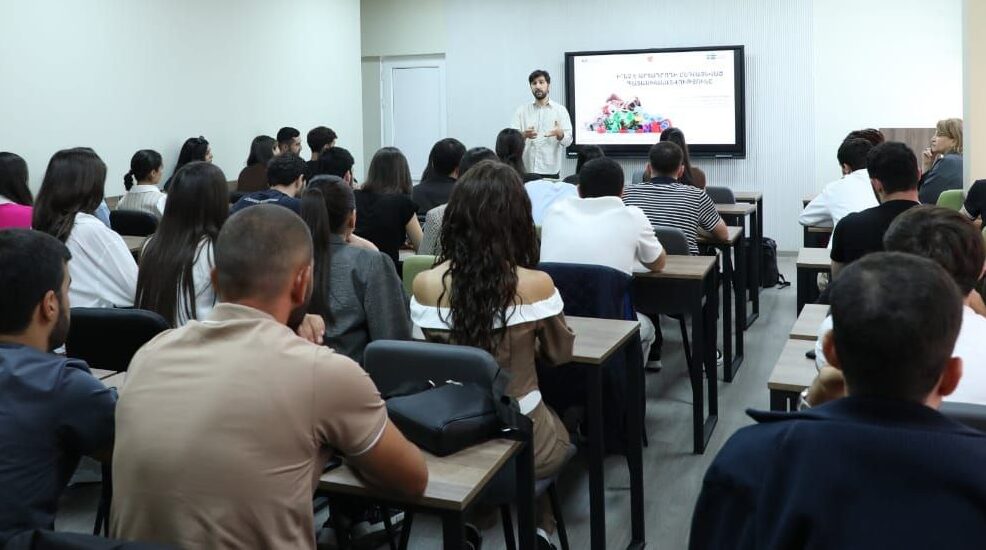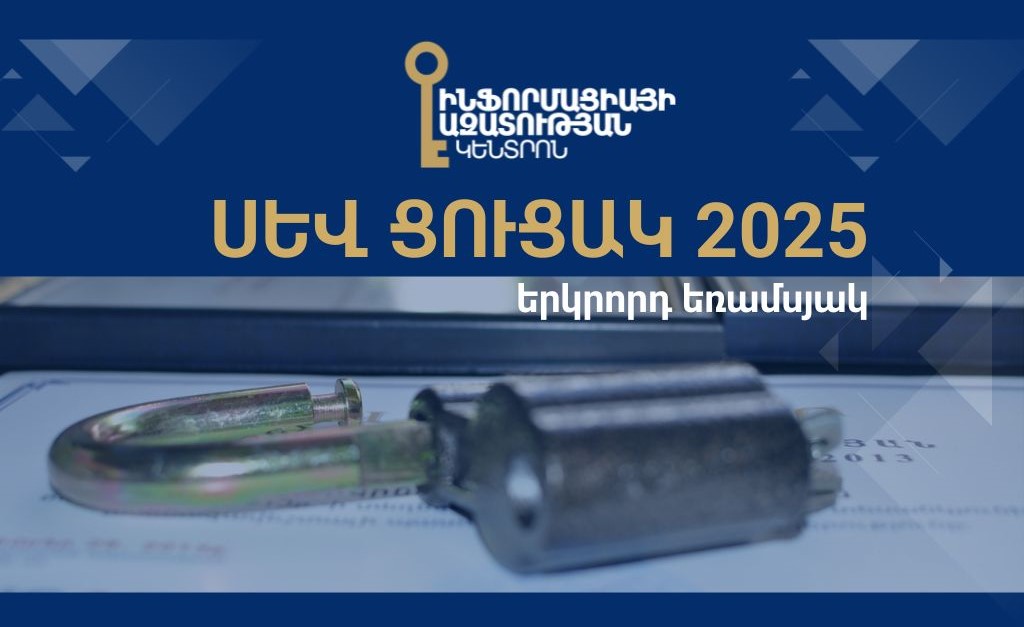On February 5, 2013 the Freedom of Information Center addressed with the electronic requests to receive information to 30 state agencies: the Office to the RA President, RA National Assembly, all RA ministries and marzpetarans (Regional Governor Offices). This time the FOICA sent the requests not via the regular mail service but via email. This initiative of the Freedom of Information Center pursued several goals: first, the FOICA had the purpose to check whether the state government agencies possessing information properly proceed with the requests and applications received by email and to what extend they ensure the timely feedback to letters received electronically from citizens.
The FOICA also had the purpose to receive certain data about how the citizens use the information technologies to address the state agencies and how many applications or requests have been submitted to particular state agency during a one-year period. And finally, these electronic requests of the FOICA enabled to clarify once again how the state agencies address the RA law “On Freedom of Information”; how they exercise the freedom of information right of everyone.
By the electronic request for receiving information, the FOICA has requested to inform:
- Is any registration of electronic requests and applications received by a particular office being carried out?
- If yes, is the registration of electronic requests and applications performed separately or jointly?
- How many elecronic requests and applications has any particular office received in 2012 (if the registration of electronic requests and applications is performed separately, then please provide the number of requests separately and the applications separately)?
30 electronic requests have been sent to those email addresses which are mentioned in the official websites of the particular 30 agsencies.
Content of answers
Note that 9 of the 30 agencies did not respond to the electronic requests; these agencies are: Office to the RA President, RA National Assembly, the RA Ministry of Territorial Administration, RA Ministry of Nature Protection, RA Ministry of Agriculture, RA Ministry of Economy, RA Ministry of Energy and Natural Resources, as well as Lori and Vayots Dzor Marzpetarans (Regional Governors’ Offices). Therefore, we will present the analysis of the answers based on the content of the answers received from 21 agencies.
The first question of the request was related to registration of electronic requests and applications received by a particular office. The answer to this question by the RA Ministry of Emergency Situations was that the Ministry did not receive any electronic requests and application whatsoever. The RA Ministry of Sport and Youth Affairs has informed that the Ministry does not register electronic requests and applications. Gegharqunik Marzpetaran did not answer to this question at all. All the rest of agencies that had answered to the FOICA’s request have provided complete answer to this question; moreover, nearly all have mentioned in their answers that the registration of electronic requests and applications is implemented via the Mulberry electronic management system (see Table 3).
The FOICA’s second question was related to whether the registration of electronic requests and applications is performed jointly or separately. The only agency practicing separate registration of electronic requests and applications is Tavush Marzpetaran. In response to this question, the rest of the agencies informed that they are doing a combined registration of electronic requests and applications. No reference to this question was made in the answers by the Ministry of Emergency Situations, the Ministry of Sport and Youth Affairs, and Gegharqunik Marzpetaran.
The third question, which was asking to provide the amount of electronic requests and applications received by a particular agency, was not answered by Ararat marzpetaran and the Ministries of Emergency situations and Sport and Youth Affairs. The rest of the agencies have presented the total number of electronic requests and applications received or separately the number of electronic requests and applications (see Table 3).
In response, the RA Ministry of Sport and Youth Affairs informed that it did not perform registration of electronic requests and applications, while the Armavir Marzpetaran did not mention separated numbers of electronic requests and applications since Marzpetaran performs a general registration of requests and applications of all formats. Therefore, we cannot compare the number of electronic requests and applications received by the aforementioned agencies because no separated data on electronic requests and applications were provided.
We need to remember that we deal with electronic version of requests and applications. These numbers do not always reflect the actual number of overall requests and applications. For example, Syunik Marzpetaran has mentioned in its response letter also the number of written and electronic requests and applications it had received; 11 of the total 26 requests received by Syunik Marzpetaran were in electronic format, while only 7 of the total 2,431 applications were electronic. Tavush Marzpetaran also has presented total numbers of requests and applications received, and this is another case when there is a huge difference between the numbers of written applications and the ones received in electronic version: Marzpetaran has received 6 requests, none of which is electronic and 1,532 applications, with only 3 being electronic.
Thus, comparison of the answers received indicates that in 2012 the highest number of electronic requests and applications were received by the RA Ministry of Diaspora: 12,765 requests and applications. The next is the Ministry of Finance which received 8,601 electronic requests and applications during 2012. The 3rd agency having received the third largest number of requests and applications in electronic version is the RA Ministry of Education and Science, with 5,027 electronic requests and applications.
Among the marzpetarans, Argatsotn Marzpetaran has received the most number of electronic requests and applications: 2,099 requests and applications.
Thus, only in 3 of the 18 ministries – the Ministry o Diaspora, the Ministry of Finance, and the Ministry of Education and Science – the numdber of the received electronic requests and applications exceeded 25,000 in 2012. The large number of electronic request implies some change in the work style of the state government agencies:
- First, a citizen who has sent an electronic request expects an electronic answer, which is more effective in terms of time; therefore there will be a need to create relevant technical conditions for the state government and local self-government agencies in the near future to register the electronic requests and applications from citizens and to answer electronically to them;
- The wide use of electronic requests creates necessity of legislative changes: to date, the RA law “On Freedom of Information” does not clearly define what is an electronic request and what is the procedure for proceeding it;
- Finally, it is necessary to ensure improved knowledge of responsible officials in state government and local self-government agencies in the field of information technologies, which is a critical precondition for effective work.
In 2012, it was only the Ministry of Emergency Situations that did not receive any electronic request or application.
In 2012, the least number of electronic requests and applications were received by Tavush, Shirak, Syunik, and Gegharqunik Marzpetarans. Tavush Marzpetaran has received 3 electronic applications (no electronic requests were received), Shirak Marzpetaran – 16, Syunik Marzpetaran – 18, and Gegharqunik Marzpetaran – 21 requests and applications.
Among the ministries, the least number of electronic requests and applications were received by the RA Ministry of Urban Development: 77 requests and applications.
All ministries having answered to the FOICA request, together, have received total of 28,902 electronic requests and applications in 2012, while Marzpetarans have received 3,629 electronic requests and applications.
The content of the answers from the perspective of FI
As mentioned above, the FOICA had presented total of 30 requests to the Office to RA President, the RA National Assembly, and all RA ministries and marzpetarans. Out of these 30, answers were received for 21 (70%), while 9 (30%) were left unanswered. Moreover, 5 of the 9 silent refusals are coming from ministries (those of Territorial Administration, Nature Protection, Agriculture, Economy, and Energy and Natural Resources), and 2 are from marzpetarans (those of Lori and Vayots Dzor). The Office to the RA President and the RA National Assembly have also left unanswered the electronic requests addressed to them.
It is noteworthy that there is a separate section in the official website of the RA President entitled “Letter to the President”. This section of the website says, however, that electronic version of letters sent to the RA President cannot be considered to be formal; they are exclusively of informative nature and are not subject to be examined through official processing. (http://www.president.am/hy/send-letter-to-president/):
It should be mentioned that silent refusals have a rather large share – 30%. These requests of the FOICA indicated that in the case of electronic requests the number of silent refusals is the same as it used to be in the case of silent refusals to written requests. This can be speaking for the lack of the culture in the state government agencies working with citizens electronically or for the lack of both knowledge and technical skills for working electronically. Of course, one cannot exclude also the fact that the large number of silent refusals can be stemming from technical problems characteristic of the electronic mail.
Nineteen of the 21 requests that were answered (63.3% of the total requests and 90.5% of those having been answered) were given complete answers, of which 17 requests were given timely complete answers and 3 were given delayed complete answers. Two (6.7% of the total requests and 9.5% of those having been answered) were provided incomplete answers. The incomplete answers were presented without delay.
The authors of the incomplete answers are Ararat and Gegharqinik Marzpetarans. The answer from the Ararat Marzpetaran was considered incomplete because no information on the number of electronic requests and applications were provided (the answer to the 3rd question of the FOICA’s request). And the answer from the Gegharqunik Marzpetaran lacked data on registration of electronic requests and applications (the answer to the 1st and 2nd questions of the FOICA’s request).
Among the 21 electronic requests having been answered, 12 (57.1% of the requests having been answered) the answers were provided in paper version, via regular mail service. Answers to 9 requests (42.9% of the requests having been answered) were provided via email. Note that in some cases, simultaneously with the response letters received via email, also the paper version of the letter was provided via regular mail service. In such cases the FOICA has considered the answer provided in the electronic version (naturally, the paper versions of the response letters reached to the FOICA later than the electronic versions).
Thus, although the FOICA had sent all requests via email, however in most cases they were given answers in paper version or also in paper version. This indicates once again that there are no procedures in place to regulate the registration and electronic response for electronic requests and applications. The issue of electronic requests is not regulated also by the law on FI; therefore, to provide the FOICA with proper information, information holders prefer to answer the electronic requests in paper version or also in paper version.
Deadlines for answers
Nine of the 30 electronic requests (30%) were left unanswered; 18 (60%) were provided timely answers, while 3 (10%) were answered with violation of the deadline. As we can see, the timely responses make a considerable share of the responses provided. It should also be mentioned that in the case of 15 of the 18 timely responses, the FOICA requests were answered within 1-3 days after sending the request.
In terms of timeframe, the Ministry of Labor and Social Affairs and the Ministry of Justice, together with the Kotayq Marzpetaran, proved to be the best; they provided complete electronic answers to the FOICA’s requests 1 day after sending the request.
In terms of timeframe, the worst agency was the Ministry of Transport and Communication, which provided a complete paper version response to the electronic request addressed to it only 1 month and 15 days after sending the request.
The rest of the agencies have responded to the FOICA’s requests during 2 to 11 days. The FOICA’s requests were provided responses in 5.4 days on average.
You can find FOICA’s requests and answers of the agancies at www.givemeinfo.am.

